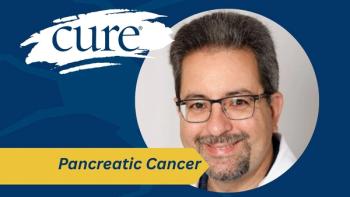
Financial Burdens Harm Quality of Life After Stem Cell Transplants
Financial burdens from medical costs negatively affect quality of life in patients who have received stem cell transplants, recent research showed.
In patients with blood cancers who received stem cell transplants, many reported experiencing financial burdens caused by medical costs, which ultimately affected their quality of life, according to recent research.
A study, published in JCO Oncology Practice, included a total of 176 patients who completed questionnaires about demographic information and the type of blood cancer they had. The median age was 57 years; 63% identified as male; and 72% identified as White. Regarding blood cancer types, 39% had myelodysplastic syndrome, 38% had leukemia and 14% had lymphoma.
Patients included in the study were all undergoing evaluation for allogeneic hematopoietic cell transplantation, which is defined as “the use of stem cells from someone other than the patient,” and can be from donors related or not related to the patient, according to the Leukemia & Lymphoma Society.
During the initial evaluation, 83 of 176 patients reported having no financial burdens caused by medical costs — known as financial toxicity — while 51 patients and 42 patients reported having mild and moderate-high financial toxicity, respectively.
“Financial toxicity is essentially the negative impact on a patient's overall well-being because of the high financial burden accumulated from medical debt,” Dr. Qasim Hussaini, lead author of the study, said during an interview with CURE®.
Hussaini is an assistant professor of medicine in the division of hematology and oncology and a health systems researcher at the University of Alabama in Birmingham at the O'Neill Comprehensive Cancer Center.
Hussaini noted that at baseline several patients with financial toxicity already admitted that they had previously refilled their medications less often. However, the frequency of cost-cutting behavior continued beyond that.
“It included reduced spending on leisure. These can include the things that (we) take for granted, such as taking vacations, eating out or watching movies,” Hussaini explained. “These can become more difficult when someone is diagnosed with cancer. Patients may start spending less on basics like food or clothing, not filling a prescription due to costs, using a lot of their savings, borrowing money, using a credit card and ultimately accumulating debt to pay for their cancer care.”
He noted that the cost burdens not only negatively affect patients’ financial situation, but also affect their quality of life.
“About six to 12 months after (patients got) transplants, we could see measurable differences in their quality of life. (Patients could’ve) gotten a successful transplant clinically. But from a quality-of-life perspective, there were items that went unmeasured.”
The results from the quality-of-life assessment patients completed, Hussaini said, reflected that “a lot of patients who have financial toxicity also had lower composite scores that took into account functioning, emotional, social and physical well-being, as well as several other treatment-related symptoms.”
Going forward, Hussaini’s team recommends that validated instruments such as the one they used in this study could be utilized by the provider and social worker-led teams to screen and assist patients at risk of financial toxicity.
“In general, for anyone with cancer, I would say bring it up to your doctor. A lot of physicians encourage a lot of their patients to bring up difficulties with the cost of treatment,” Hussaini said. “Once you bring it up to us, we will help (guide you towards) the resources you need to reduce the risk that you face without having increased financial burden. It doesn't mean you're going to get less treatment, you will always get the best standard of care treatment that you need for your cancer.”
For more news on cancer updates, research and education, don’t forget to





